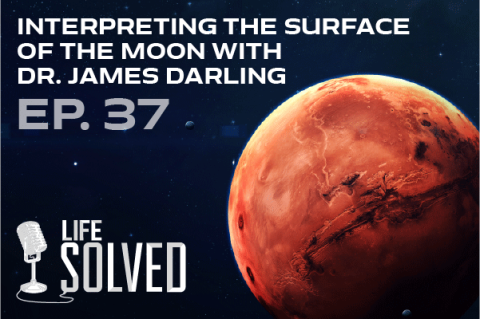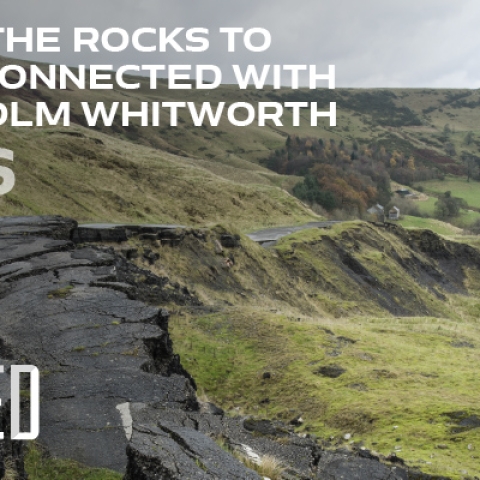

Combining data sources and sharing information to put a rocket under space innovation
16 min listen
We are entering one of the most exciting periods of space exploration, according to Dr James Darling. In the Life Solved podcast, he explains how the University of Portsmouth is playing its part in testing ideas and developing new technology.
Different histories, shared mysteries
From the robotic monitoring of planetary surfaces to amazingly detailed satellite monitoring data, the opportunity to combine resources and take human space discovery to the next level is moving at a startling pace. But as a Reader in Earth and Planetary Materials, James says some of the most exciting breakthroughs are those we can make in understanding our own planet’s history.
Compared to Mars or the Moon, the surface of Earth is young and still changing rapidly. James says that by understanding the geology of older planets, we can begin to develop theories about our future – and past.
Holes in the Moon fill in the answers
Even the tiniest piece of moonrock can reveal secrets. By looking at the mineral structure of tiny samples brought back from the Apollo missions using an electron microscope, the team realised something: Much more of the Apollo material than previously known may have formed from huge, energetic meteorite impacts in melt sheets. This challenged the long-held belief that much of this material had formed from magnetic intrusions that are similar to those found on Earth. So there is still much to be learned with new methods of analysis on old material.
A big sample for us is a few centimetres. And so we don't need a lot of material to extract a huge amount of information. So that's really the benefits of the modern laboratory techniques.
Dr James Darling, Reader in Earth and Planetary Materials
James is bringing his geological expertise to data gathered from the Mars Rover missions. He says robots can allow us to study the surface of planetary bodies as we would our own earth’s crust:
Work we're doing is tapping into or feeding information into NASA exploration, European Space Agency, Chinese Space Agency…You can pretend you're in the field looking at rocks!
Dr James Darling, Reader in Earth and Planetary Materials
The search for life isn’t just confined to other planets. Without a good record of the first billion years of Earth’s history, many questions are left to be answered about our own planet’s past. James points out that by looking at asteroid material, you can also begin to understand key moments in a planet’s history, even perhaps, the origins of life.
There are specific comets and asteroids out there that contain many of the basic chemical ingredients for life. And so you can conceivably find a way that you can concoct the building blocks of bacterium life.
Dr James Darling, Reader in Earth and Planetary Materials
James says his field can answer questions with more questions, but that with so many Mars missions planned and even manned missions to the moon on the agenda again, the prospect of exciting new material – and perhaps new challenges to old theories – looks set to skyrocket.
Previous episode
Next episode
Discover more episodes
Reading the rocks: how we can predict landslides to keep homes safe and highways open
In this episode of Life Solved, Dr Malcolm Whitworth explains how he studies landscapes to predict, prevent and prepare for natural hazards. Listen now.
18 May 2021
14 min listen

How has the pandemic changed mental health and education opportunities for young people?
In this special new series of Life Solved we explore the trends, changes and innovations that are taking place in response to the Covid-19 pandemic. Listen now.
15 June 2021
36 min listen

